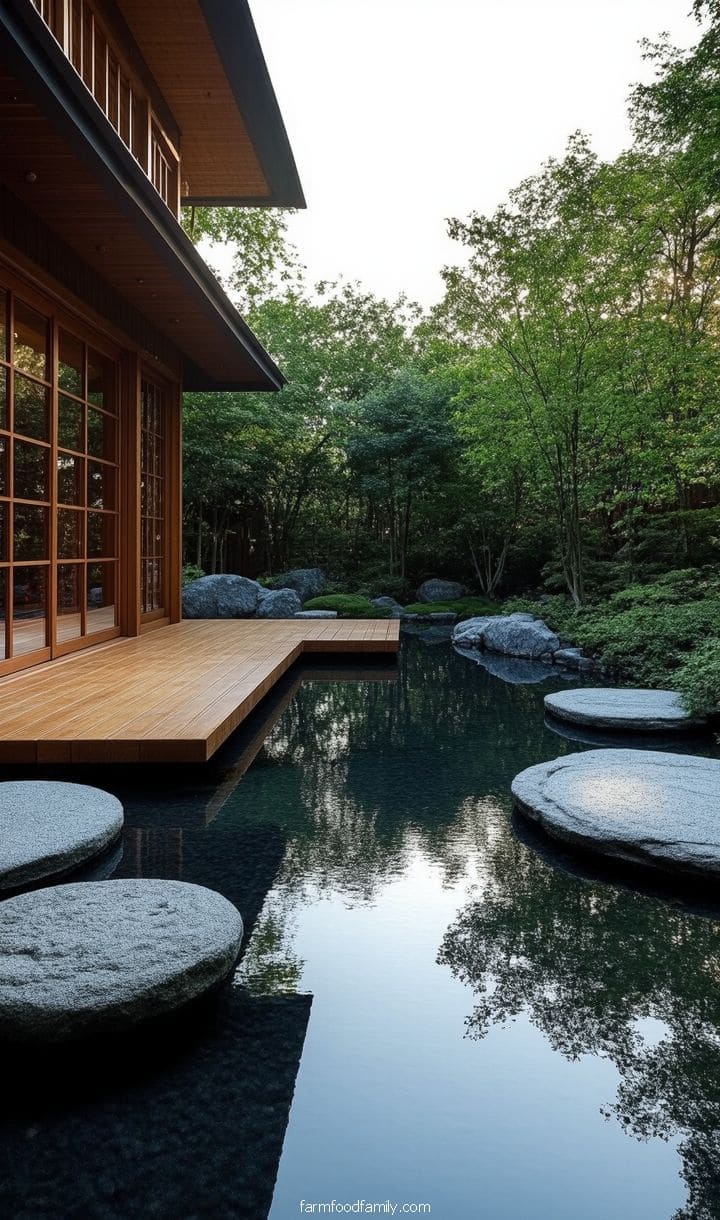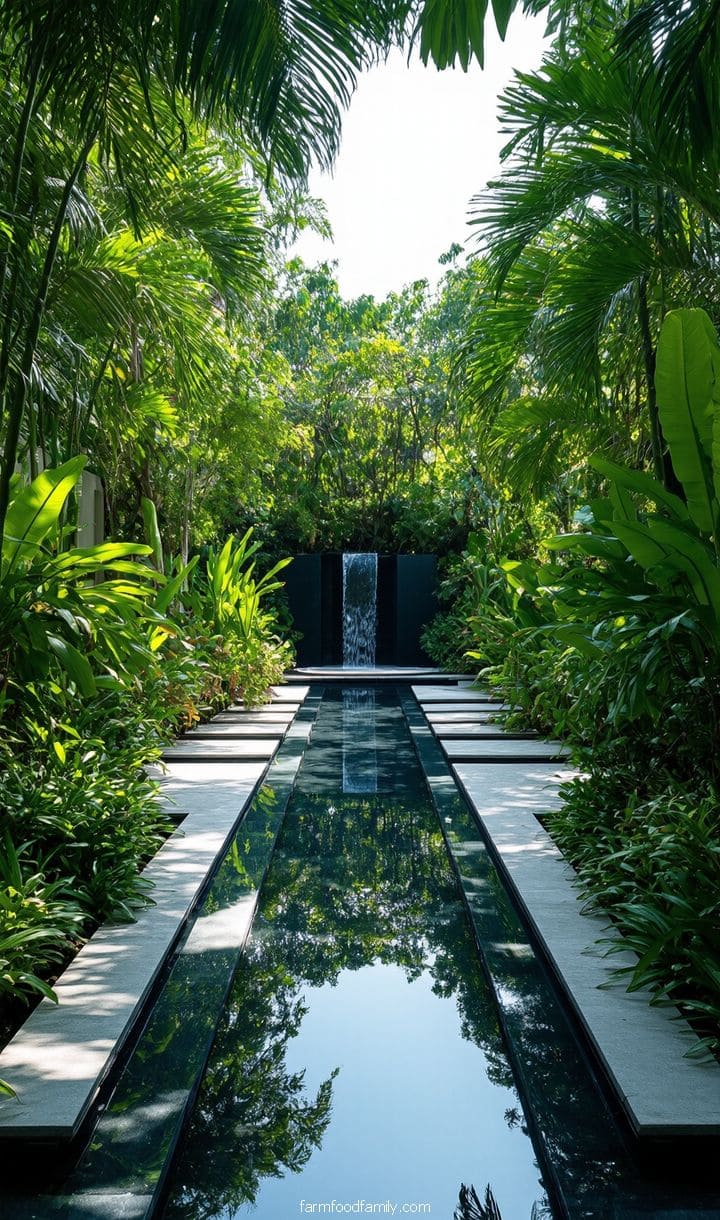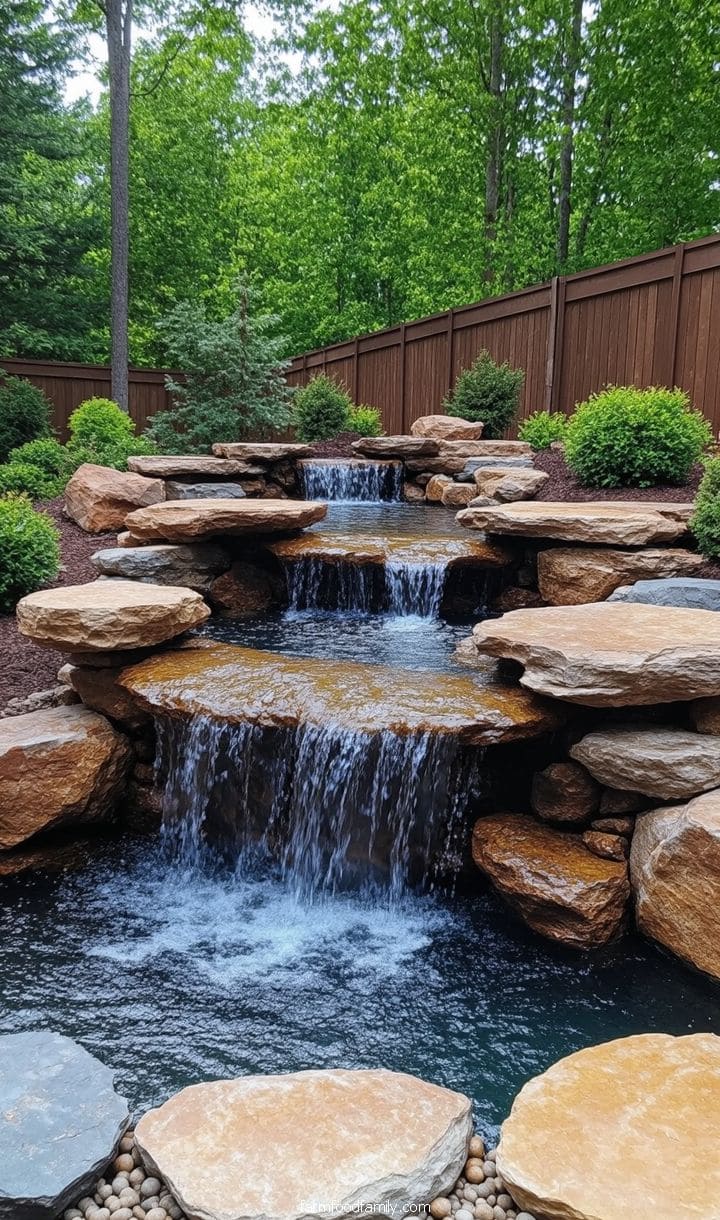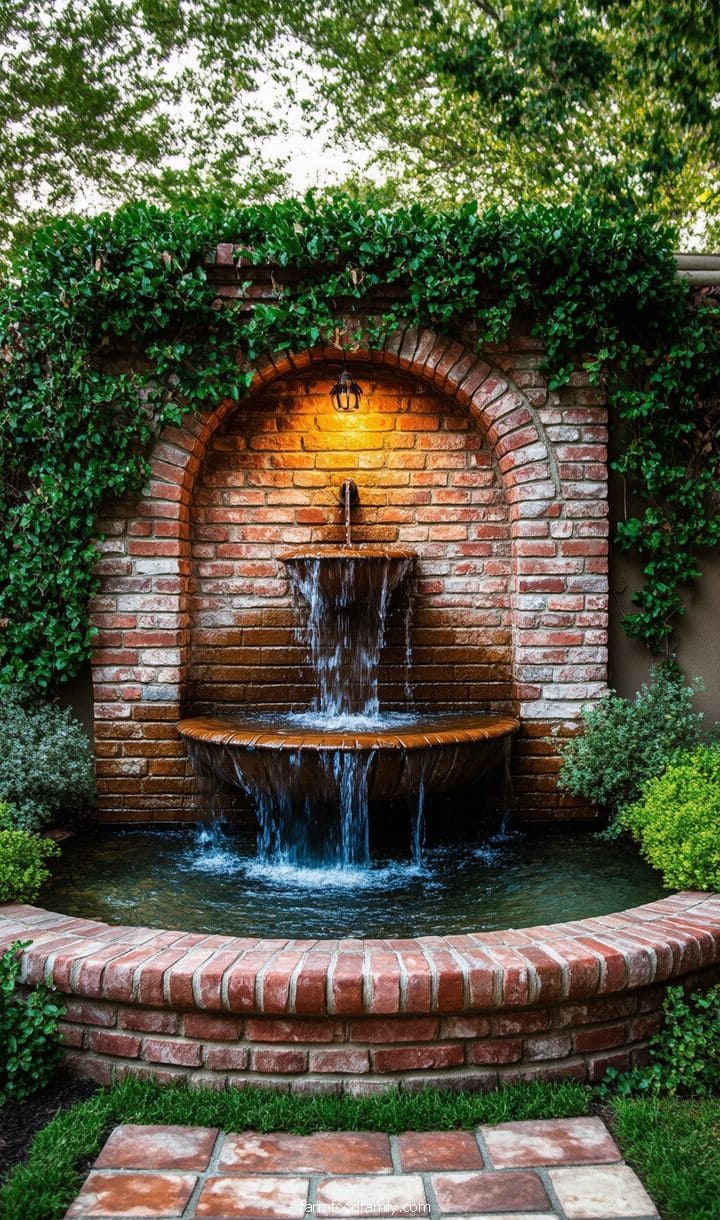Water features add tranquility, beauty, and a touch of luxury to any outdoor or indoor space. Whether you’re looking for a soothing fountain, a dramatic waterfall, or a minimalist reflecting pool, there are countless ways to incorporate water into your home’s design.
Water elements create a sense of relaxation and can transform a simple garden or patio into a serene retreat. With options ranging from naturalistic rock formations to sleek, modern designs, these water feature ideas have one that’s perfect for anyone.











1. Classic Tiered Fountain for a Traditional Look

A tiered fountain is a smart way to incorporate movement and sound into your outdoor environment.
These fountains, which are commonly fashioned of stone or concrete, have cascading water that falls smoothly from one level to the next, creating a pleasant atmosphere.
Their beautiful design complements formal gardens, courtyards, and serves as a focal point in a patio environment.
Surround the fountain with lush greenery, beautiful flowers, or ornamental tiles that reflect the movement of the water to add to its charm.
Lighting can also be installed to emphasize the flowing water in the evening, creating a captivating addition to your yard.
The steady trickle of water helps to hide undesired noise, making it ideal for urban situations that require a little additional serenity.





2. Modern Reflecting Pool with Minimalistic Elegance

A reflecting pool is a sleek and beautiful solution for people who value a modern, minimalist appearance. These shallow pools include still water that reflects the sky, trees, or nearby structures, resulting in a visually appealing appearance.
Reflective pools, which are common in Zen gardens and contemporary landscapes, provide a sense of serenity and harmony.
Consider a black-bottom design to enhance the reflection, or incorporate stepping stones for a unique, interactive feature.
Bordering the pool with stone pavers or a wooden deck keeps the appearance clean and sophisticated. If you desire movement, place a modest bubbler or fountain in the center to produce a delicate ripple effect.





3. Koi Pond for a Dynamic and Living Water Feature

A koi pond brings movement and life to your outdoor environment, creating a serene yet exciting focal point. These ponds are often surrounded with natural stones, aquatic plants, and, of course, colorful koi fish, adding a touch of nature to your yard.
Watching the fish move and listening to the calm sound of water circulation provides a contemplative experience. To maintain the pond balanced, add a filtration system, aeration, and vegetation such as water lilies, reeds, or lotus blooms.
If space allows, a tiny bridge or stepping stones over the pond can provide another layer of visual appeal. Soft underwater lighting illuminates the pond at night, giving a wonderful effect that complements the entire environment.





4. Rock Waterfall for an Organic Oasis

A rock waterfall brings the majesty of a mountain stream into your garden. These elements, made of natural or stacked stones, provide a cascading flow of water that resembles a natural waterfall while fitting in smoothly with the surrounding terrain.
The sound of water falling over rocks is both soothing and efficient in blotting out city bustle. Incorporate natural plants, moss, and ferns around the rocks to enhance the waterfall’s organic feel.
Adding a small pond or basin at the waterfall’s foot completes the feature while also attracting birds and wildlife. Solar-powered pumps provide an environmentally beneficial approach to keep water flowing while lowering energy expenses.





5. Using a Wall Fountain to Save Space

Wall-mounted fountains are great for individuals seeking a vertical water element that takes up less ground area. For a touch of elegance, put these fountains against a garden wall, on a patio, or even indoors.
For a contemporary design, select a sleek metal or glass fountain with LED lights. Stone or tile designs might provide a more rustic or Mediterranean atmosphere. Climbing plants like ivy can help soften and blend the fountain with its surroundings.







source: scatteredthoughtsofacraftymom.com
source: interiorfrugalista.com
Tea Pot Fountain

source: hometalk.com



source: safaffect.wordpress.com
source: goodshomedesign.com
source: allthingsheartandhome.com

source: tatertotsandjello.com


source: makingforliving.com
source: familyhandyman.com

source: lowes.com
DIY Copper Water Wall


source: jparisdesigns.com
source: blog.capscreations.com

>
source: flyingkitten.wordpress.com

source: instructables.com


source: gardenfuzzgarden.com
source: gardenstew.com
source: bhg.com

source: hgtv.com

source: dawnmarie100.blogspot.com


source: bhg.com
source: hiphousegirl.wordpress.com

source: diyrecyclist.com

source: instructables.com


Additional Resources
To further enhance your knowledge and skills in creating and maintaining water features, here are some recommended resources:
A. List of recommended books and websites for further reading
Books:
- “The Water Gardener’s Bible” by Ben Helm and Kelly Billing – A comprehensive guide to creating, planting, and maintaining water gardens.
- “The Complete Guide to Building Backyard Ponds, Fountains, and Waterfalls for Homeowners” by Melissa Samaroo – Offers step-by-step instructions for a variety of water features.
Websites:
- Gardeners’ World – Provides a wealth of information on garden water features, including how-to guides and design ideas.
- The Pond Guy – Offers advice, products, and resources for pond and water feature care.
B. DIY forums and communities for support and inspiration
Forums:
- Garden Pond Forums – A community of pond enthusiasts where you can ask questions and share experiences.
- DIY Chatroom – A forum to discuss DIY projects, including water features, with other homeowners and professionals.
Communities:
- Reddit DIY – A subreddit dedicated to DIY projects where you can find inspiration and advice on water feature construction.
- Houzz – A platform for home remodeling and design, offering a community section with discussions on water features.
Water features bring elegance, relaxation, and sensory appeal to any space, whether indoors or outdoors. From grand koi ponds to minimalist reflecting pools, each design offers a unique way to enhance your environment.
Choosing the right feature depends on your available space, desired aesthetic, and level of maintenance you’re comfortable with. Did you find the perfect water feature for you? Leave a comment with your thoughts and share this list with family and friends!







